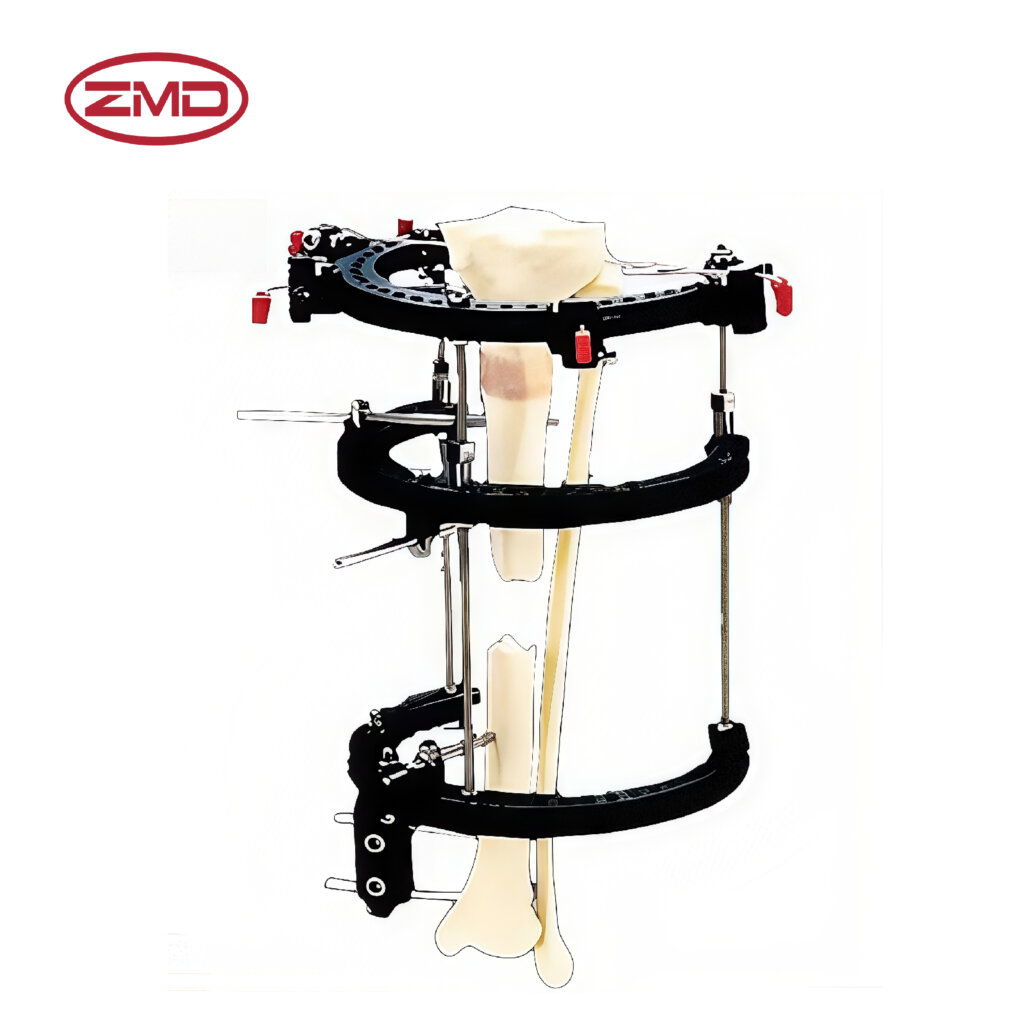
- Home
- About Us
- Products
- Trauma Internal Fixation System
- Spinal Internal Fixation System
- External Fixation
- Artificial Implants System
- Sports Medicine
- Power tools
- VSD System
- Instruments
- Medical supplies
- Blog
- Personnel Profile
- Contact Us
Phone line
| CODE | PRODUCTION | DESCRIPTION | MATERIAL |
| ZK006 | Articulated Minirail Fixator (Multiplanner Axis) | Whole set | Aluminum |
The fixator's uniqueness lies in its ability to allow for articulation in multiple planes. This provides greater flexibility compared to traditional fixators, enabling it to address complex orthopedic situations where movement and adjustment in various directions are required.
It is typically attached to the bone using screws or pins. During a surgical procedure, these are carefully inserted to create a secure connection that allows the fixator to function effectively in stabilizing the bone.
While it is suitable for many complex fracture cases, it cannot be used for all. Its design makes it well-suited for fractures with displacements in multiple planes, but certain fractures with specific characteristics might require alternative treatment methods.
The amount of movement it permits in different axes can be adjusted by the surgeon. This adjustability allows for customization based on the specific needs of the patient's injury and the stage of the healing process
It allows for controlled movement, which actually helps enhance the healing process while maintaining stability. So, rather than significantly restricting mobility, it aims to mimic natural movement to some extent and prevent excessive stiffness.
There may be some initial discomfort when wearing the fixator, but this can be managed through appropriate medical measures such as pain medications and proper positioning adjustments.
Yes, adjustments can be made as the healing progresses. Surgeons can modify the fixator's settings based on regular assessments of the patient's condition and imaging results to ensure optimal bone alignment.
Possible risks include infection, which can occur as with any implanted device, and improper placement. However, proper surgical techniques and post-operative care can help minimize these risks.
The duration it needs to be in place depends on the nature of the injury and the progress of the healing process. Surgeons will monitor the patient's recovery and decide when it is appropriate to remove the fixator.
In some cases, it can be used in combination with other orthopedic devices. This might be necessary depending on the complexity of the orthopedic condition and the specific requirements of treatment.
Oh yeah! I have to mention their payment options and discount offers, which are awesome! Those payment methods are as flexible as moving water and can be chosen freely according to our cash flow situation. And the frequent discounts, like a timely rain, have been moisturizing our financial statements time and again, and have had a rocket-like positive impact on our profits! With ZMD, I feel relaxed and at ease when it comes to purchasing!
Send us a message if you have any questions or request a quote. Our experts will give you a reply within 24 hours and help you select the right valve you want.
Book Now
If you are looking for professional orthopedic medical product solutions, don’t hesitate to contact us now!

We are an integrated manufacturer specializing in orthopedic medical industry, providing high quality and reliable orthopedic medical products to customers worldwide.
Copyright © 2024 ASK Project